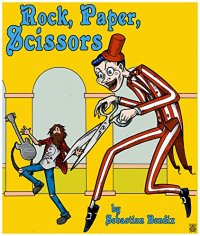Want to improve your writing? Look no further. 6 tips that will make your writing instantly better.
A writing manual especially suitable for the general reader, student or English learner.
Most people agree that writing is very important. Better writing will often get you:
… a better job
… a higher grade
… better business results.
Yet just as many people are afraid of writing. They’re never sure of their writing, or of how to write. If your first language isn’t English, that lack of self-confidence may be even harder to overcome.
Yet, as this guide sets out to show, writing doesn’t have to be complicated. Whether you’re writing an essay, an email or a letter, there are some rules for any kind of writing that are simple to apply.
So the following book is a writing manual. There are six steps, plus a bonus tip, to make your writing smooth, logical, easy to read and to understand.
Table of Contents:
Introduction: Why Do You Need Good Writing?
Step 1: Making Short(er) Sentences
Bad writers use long sentences to try to make an impression on their readers, but those readers will be put off if the sentence doesn’t serve the point. Shorter sentences are not a sign of the writer being a person of low intelligence. On the contrary, knowing when to finish your sentence and using correct punctuation show that you have a sense of style and direction, and you don’t waste your reader’s time.
Step 2: State the Purpose of What You’re Writing Clearly
Some emails intend to give information, others mean to solve a complaint. Essays argue a point. Say what your text plans to do, and don’t let your readers guess what you’re up to.
Step 3: Finding and Ordering Your Subject
You may have a great subject, but it’s just as important to know how you will write about that subject. In addition, you might have been wondering whether your text should always express your viewpoint or should it be neutral?
Step 4: Dividing a Text into Paragraphs
How long should paragraphs be, and can they really have only one subject?
Step 5: Using Appropriate Connectors
We’ll learn about the most simple connectors: “and,” “but,” and “however,” and how you should use them. In addition: what is the correct punctuation with “however.”
Step 6: Structure Your Writing
Most texts have an introduction, a middle part and a conclusion. What should be in each of those parts?
Bonus Step: A Trick to Make Your Sentences Logical and Easier to Understand
How you order the information in your sentences makes all the difference. Do you put new information first, or last? You’ll find out if you read this!
Don’t Just Read this Book.
Just reading this book is probably not enough, so for better results have a look through the practice exercises. If you follow the six writing tips, and maybe (preferably!) do a little bit of practice, your writing in English should improve dramatically.
How to Start
If you’re not one of those people who can sit down to face a blank piece of paper or an empty monitor, and start penning away, it doesn’t mean at all that you can’t be a good writer.
Nobody was born a good writer. Some people, especially people who love to read, may have a natural gift for language. But really writing is a craft, and like all crafts it can be learned. If you consider your writing to be like a skill that you can master, you will feel yourself getting better and better. The more you use your writing skills, they will come easier to you and as a result you will enjoy writing more, which again makes it easier to improve.
You just need to learn things methodically. And this is what I will be teaching you in the writing manual.
If you follow the tips, you will achieve:
– A higher score in your course essays
– More success in your professional writing
– Greater ease in your writing, such that you might even get inspired to write your own book.
Scroll back to the top to grab your copy now!












